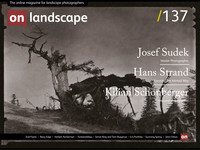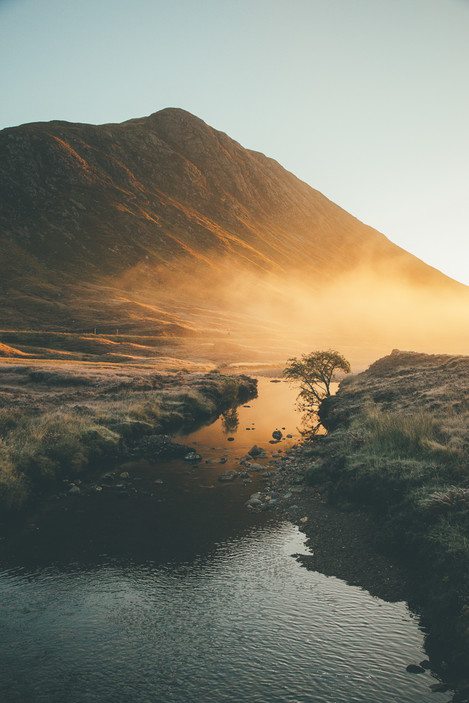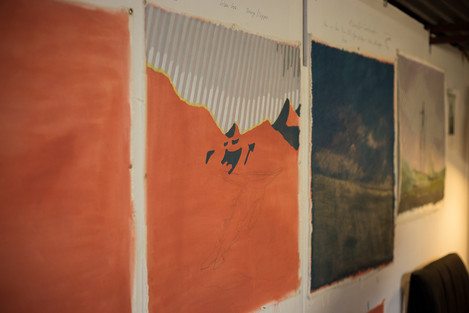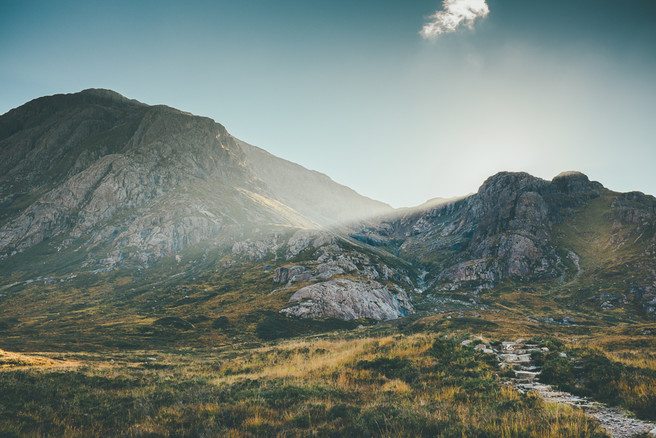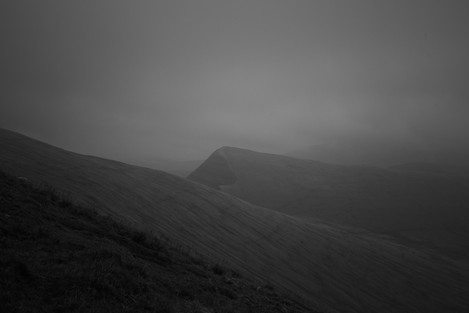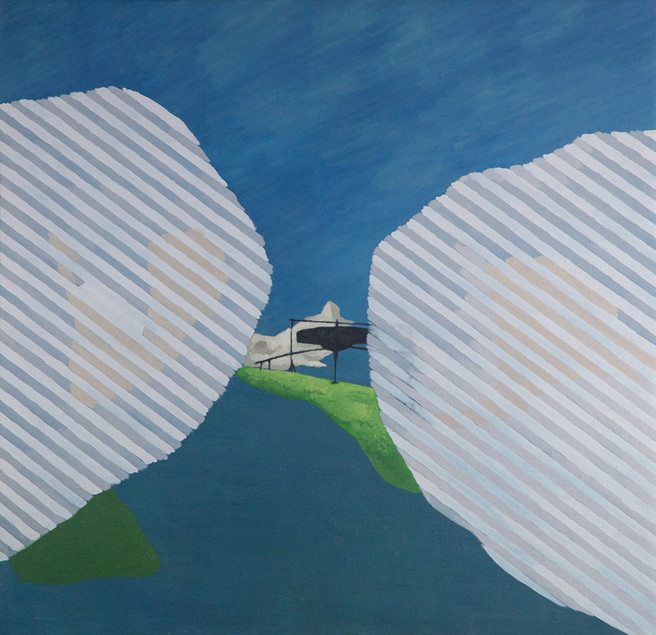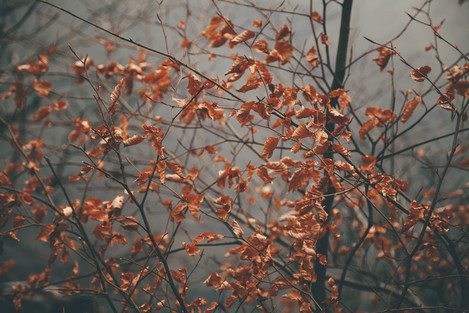The exchange of ideas

Charlotte Parkin
Head of Marketing & Sub Editor for On Landscape. Dabble in digital photography, open water swimmer, cooking buff & yogi.

Simon Bray
Simon Bray is a Manchester based artist and creative producer, currently utilising photography, audio, installation and text to explore the notions of loss, identity and place. His work has been shown at Manchester International Festival, The Whitworth, Southbank Centre, Brighton Photo Biennial, The Guardian, Telegraph Magazine, BBC In Pictures and BBC Breakfast TV. In 2018, Simon worked with British documentary photographer Martin Parr, as producer for his commission for Manchester Art Gallery.

Tom Musgrove
Tom Musgrove is a Manchester based artist. Drawing is the foundation of his work, initially capturing gestures, form and shapes from the landscape that are then expanded upon in his studio space to create fine art pieces. He produces work in a variety of mediums, as painting, sculpture or drawing, utilising raw pigment, found natural sources and wax layers to represent the location and atmospheric conditions within his work.
This project is a collaboration between artist Tom Musgrove and photographer Simon Bray, depicting seven landscape locations from across the British Isles using their respective mediums. The project was supported by Arts Council England, G.F Smith, production company DoodledoMOTION, Pressision Ltd and Fred Aldous. They recently exhibited the project for one night at The Whitworth in Manchester as part of their Thursday Lates series which welcomed over 400 people on the night.We spoke to Tom and Simon to talk about their collaboration. The work from the project has been gathered together in a self-published book, available to purchase from the project website: www.theedgesoftheseisles.com
Charlotte Britton (CB): The idea of the collaboration - how did it come about and how did you make it work?
Simon Bray (SB): Originally, the project was a means for us both to focus on our landscape work, and at the beginning, that was all we shared, we’d each made a decision to be proactive in focusing on using the landscape as our subject matter and we’d decided to explore that together. Working alongside another artist in this way wasn’t something either of us had done before, so we were careful not to place any expectations on the work that would be created, or indeed how working together would affect what was being produced. It took time to build up the relationship. It takes a lot of trust and vulnerability to be expressive in front of someone new, and our way into that was through sharing music on the drives to locations. We’d each bring stacks of CD’s to play to each other, and that really helped strengthen the understanding between us.
Tom Musgrove (TM): The collaboration started when we had a meeting over coffee together at The Anchor Coffee House (which Simon runs). We had completed the Three Peaks Challenge together and I knew Simon was interested in the work I did for that, in particular, an abstract painting about Wastwater. We both enjoyed the experience of those landscapes, being outside with space to breathe, weather to endure and a new path to tread. So in we found in this project a place to get more of that really.
The collaboration has itself become so much more than the work submitted, it has become the conversations between us, the exchange of ideas, grand and minute and also books now, it is becoming political. And all these things go into the work that comes out in the end.
CB: There are so many locations you could have chosen, so how you approach the locations you chose? Did you whittle it down from a list or was there another approach?
SB: As we headed out on trips together, we had time to talk, to discuss our approach, how we process what we are seeing and experiencing and in turn, how that would be portrayed within the work. Some of those journeys were 6 hours at a time, in the car together, really delving deep and asking questions of one another practice.
This really was the first instance of my appreciation of putting myself into my imagery. Photography, by its nature, captures a specific place at a specific time, and to that end, I was making Tom get up early and stay out late in order to see the light evolve across the landscape and seek out those sublime moments where everything just seems to fit together and you want to preserve it forever.
As an artist that uses paints, waxes and sculpture, Tom’s appreciation of a place is built through a broader sensory understanding, instigated in its various physical forms, but with the opportunity (luxury or burden, I still can’t decide) to ruminate on those experiences over days, weeks and months and to allow himself to distill those into a final piece or often pieces as his understanding of a place evolves over time. That broader sensory understanding is certainly something that I am now looking to put into my imagery, not just a visual appreciation of the combination of place, light and season, but of my experience of that place in that moment and how I could express that with my imagery.
TM: I would approach the locations as open-handed as possible, and as clear-headed. Like Simon mentions, rumination is obligatory and so this dictates that the more I can scribble down inside the landscape then the deeper the reservoir I will have to draw from in order to make work. The scribbles contain as much written notes as they do drawings. So, the most work happens at the start, upon arrival, where I don’t know the place at all and I want to find out exactly what it is that is there to find and I draw figuratively what I see before me. Then as time passes and my experience grows I can include in those drawings my feelings and other senses that come, and begin to see how I relate to that particular landscape.
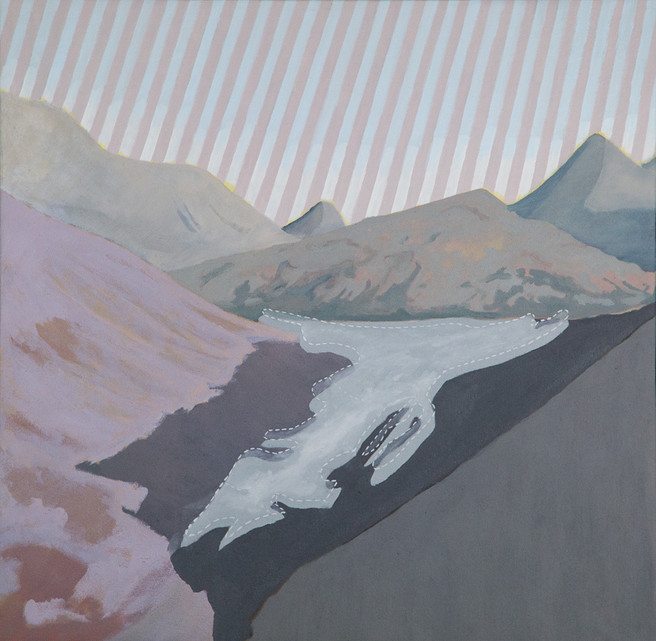 The scribbles contain as much written notes as they do drawings. So, the most work happens at the start, upon arrival, where I don’t know the place at all and I want to find out exactly what it is that is there to find and I draw figuratively what I see before me. Then as time passes and my experience grows I can include in those drawings my feelings and other senses that come, and begin to see how I relate to that particular landscape.
The scribbles contain as much written notes as they do drawings. So, the most work happens at the start, upon arrival, where I don’t know the place at all and I want to find out exactly what it is that is there to find and I draw figuratively what I see before me. Then as time passes and my experience grows I can include in those drawings my feelings and other senses that come, and begin to see how I relate to that particular landscape.
CB: Obviously you have different styles of workflow and artistic style - did you talk beforehand about the styles or did you just let the landscape work on the day?
SB: As I’ve mentioned, the talking was a significant part of the collaboration, and our approaches would vary according to the place, the landscape or the time, but I don’t feel that at any point we directed ourselves or one another in terms of visual styles.
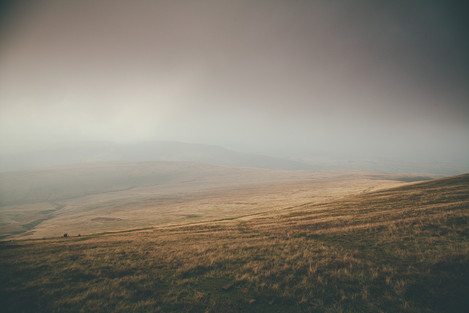 TM: Yes, as Simon says the landscape was stimulus enough exactly. We would talk a lot about what we were ‘going’ for, with Simon’s filters and my sketches and all our tools, but it was more a fly-by-wire thing really. I think I will say the main influence of style was the weather, the extremes of it in its serenity and chaos.
TM: Yes, as Simon says the landscape was stimulus enough exactly. We would talk a lot about what we were ‘going’ for, with Simon’s filters and my sketches and all our tools, but it was more a fly-by-wire thing really. I think I will say the main influence of style was the weather, the extremes of it in its serenity and chaos.
CB: Once you had been to the locations, how did you choose the images and paintings from the ideas you had?
SB: The editing process was much more long winded for me than it was for Tom. He perhaps had 2 or 3 pieces from each place, whereas I had unto 30 that I had to whittle down to fit in the book and then select one for the final exhibit to be shown alongside Tom’s. Again, I don’t think we wanted to dictate to each other what would be shown, but we certainly took time to show each other pieces and allow each other to pass comment on what was shown.
The aim was never that we would be presenting two pieces side-by-side of the same view by different artists, but we wanted to ensure that the work complimented each other. To that end, it was important for me that we went some way in demonstrating the collaboration, especially within the book, to portray that this work could not have been created if we’d each gone about it individually. The truest collaborations will include a third element, not only the works of the two individuals but elements that the viewer can experience because of the collaboration, that as a result of the collaboration, something greater might be created then the component parts. I don’t think it’s necessarily up to us to say whether we achieved that, like all art, it’s for the viewer to conclude, but I’m hoping the collaboration has provoked questions and thoughts in the viewers mind.
TM: Yep – nothing to add – a great answer!
You can watch the film they made of the project below and you read more on their website. There is also an exhibition starting on the 9th June (closes 17th July) in Clitheroe, Lancashire which you can find out about by clicking here.

